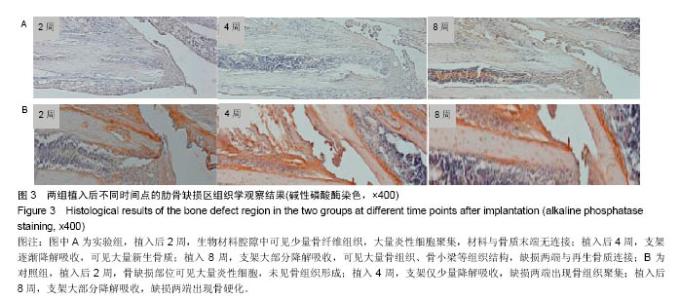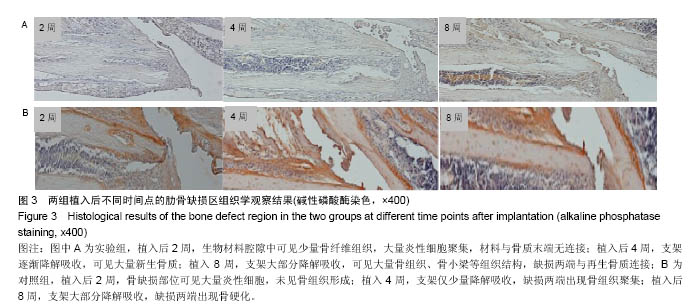| [1]Gurav AN.Management of diabolical diabetes mellitus and periodontitis nexus: Are we doing enough?World J Diabetes. 2016;7(4):50-66.[2]Montserrat N,Nivet E,Sancho-Martinez I,et al.Reprogramming of human fibroblasts to pluripotency with lineage specifiers. Cell Stem Cell.2013;13(3):341-350. [3]Cao Y,Xiong J,Mei S,et al.Aspirin promotes bone marrow mesenchymal stem cell-based calvarial bone regeneration in mini swine.Stem Cell Res Ther.2015;6:210.[4]余勇,邓锋,吴艳.生物材料在牙再生领域中的应用与未来[J].中国组织工程研究,2016,20(3):446-450.[5]沙川华,张涛,李龙.人体小腿肌腱生物材料力学特征实验研究[J].成都体育学院学报,2016,42(4):82-86.[6]Sanchis-Gomar F,Garcia-Gimenez JL, Pareja-Galeano H,et al.Erythropoietin and the heart: physiological effects and the therapeutic perspective.Int J Cardiol. 2014;171(2): 116-125.[7]Ogunshola OO,Bogdanova AY.Epo and non-hematopoietic cells: what do we know? Methods Mol Biol. 2013;982:13-41.[8]He H,Qiao X,Wu S.Carbamylated erythropoietin attenuates cardiomyopathy via PI3K/Akt activation in rats with diabetic cardiomyopathy.Exp Ther Med.2013;6(2):567-573.[9]陈宝林,王东安.用于心血管医疗装置的聚合物材料表面构建与生物相容性评价:聚合物生物材料表面的内皮细胞组织工程化改性[J].中国组织工程研究,2016,20(30):4515-4523.[10]Dashkevich A,Hagl C,Beyersdorf F,et al.VEGF Pathways in the Lymphatics of Healthy and Diseased Heart. Microcirculation.2016;23(1):5-14. [11]Cubrani? A,Redzovic A,Dobrila-Dintinjana R,et al.Mystery Story about Erythropoietin (Epo) and Erythropoietin Receptor (EpoR) are Disguised?Hepatogastroenterology. 2015;62 (139):585-589.[12]Bjornstad P,Truong U,Dorosz JL,et al.Cardiopulmonary Dysfunction and Adiponectin in Adolescents With Type 2 Diabetes.J Am Heart Assoc.2016;5(3):e002804.[13]Meredith IT,Tanguay JF,Kereiakes DJ,et al.Diabetes Mellitus and Prevention of Late Myocardial Infarction After Coronary Stenting in the Randomized Dual Antiplatelet Therapy Study. Circulation.2016;133(18):1772-1782.[14]Heinonen I,Sorop O,de Beer VJ,et al.What can we learn about treating heart failure from the heart's response to acute exercise? Focus on the coronary microcirculation.J Appl Physiol(1985).2015;119(8):934-943. [15]李锐,蔡平讨,叶丽冰,等.[PEAD:肝素:NGF]生物材料促进大鼠坐骨神经损伤恢复[J].中国生物工程杂志,2016,36(2):68-72.[16]侯立刚,杨建义.人工韧带生物材料修复膝关节交叉韧带损伤:问题及前景[J].中国组织工程研究,2016,20(8):1196-1202.[17]董君博.骨形态发生蛋白、碱性成纤维细胞生长因子生物材料在关节软骨缺损修复中的生物性能[J].中国组织工程研究, 2016, 20(20):2915-2920.[18]邱良婷,叶联华,黄云超.生物材料植入感染与表皮葡萄球菌生物膜形成的相关基因调控[J].国际生物医学工程杂志, 2016,39(1): 37-42.[19]赵立升,李俊杰,温宁.磷酸钙类生物材料在口腔临床应用中的研究进展[J].中华老年口腔医学杂志,2016,14(3):184-187.[20]单永强,徐丽明,柯林楠.动物源性生物材料中残留α-Gal抗原检测方法[J].生物医学工程学杂志,2015,52(3):662-668.[21]侯春林.对当前医用生物材料研究的一点看法[J].中国骨与关节杂志,2015,4(11):814-815.[22]柳华,鲍柳君,欧阳宏伟.富血小板血浆促进骨再生的原理及治疗进展[J].中华创伤杂志,2014,30(1):78-81.[23]秦蕴豪,张长青.间充质干细胞促进骨再生的生物学基础及应用[J].中华创伤骨科杂志,2014,16(6):533-536.[24]罗涛,刘天涛,郭吕华,等.基因活化的仿生生物材料促进骨再生的实验研究[J].医学信息,2014,22(8):110-111.[25]郑科,宋冬惠,冯兴梅,等.失神经支配在胫骨牵张成骨延长过程中的骨再生及Runx2表达[J].中国组织工程研究, 2015,19(37): 5988-5992.[26]徐金汉,张清彬,刘亚蕊,等.牙周膜干细胞移植促进兔牙槽骨再生的实验研究[J].实用医学杂志,2014,30(2):213-216.[27]陈加荣.组织工程关节软骨再生修复的在体无创监测方法研究[D].第三军医大学,2013.[28]29.义勇,魏垒.基质细胞衍生因子-1与骨再生修复[J].国际骨科学杂志,2016,37(3):190-193.[29]30.张玉凤,王璐,辜向东.等.Mimics与Micro-CT内置软件测量小鼠颅骨缺损骨再生的对比研究[J].重庆医科大学学报, 2015, 40(2):186-190.[30]黄国倩,李大鲁,李肇元.Osx基因活化技术促进种植体周围骨再生的实验研究[J].山东医药,2014,54(37):24-26.[31]付冬梅,王拓,陈红亮.不同生长因子在骨再生修复中的作用研究进展[J].西南国防医药,2016,26(2):219-221.[32]张龙城,胡万青,曹高翔.rhBMP2复合材料用于甲状软骨再生修复的研究[J].中国耳鼻咽喉颅底外科杂志,2015,21(1):57-60.[33]王贵玲,仇丽鸿,庞希宁.间充质干细胞的旁分泌作用及其在颅颌面骨再生治疗中的应用研究进展[J].中国实用口腔科杂志,2016, 9(6):373-378.[34]葛少华,刘红蕊,李敏启.局部应用SDF-1对大鼠牙周缺损模型中干细胞募集及骨再生的促进作用研究[C].全国牙周病学学术会议,2014.[35]邱伟江,郑学汜,刘智飞.不同口腔修复膜材料对牙种植中骨再生影响情况研究[J].口腔医学,2015,35(11):955-957.[36]安莹,高丽娜,李蓓.阿司匹林增强干细胞膜片的骨再生能力[C].全国牙周病学学术会议,2014.[37]马云龙,马远征,李力韬.二氧化钛纳米管阵列在骨再生和药物控释中作用的研究进展[J].中华创伤杂志,2015,31(12):1146-1149.[38]陈莉丽,魏芬,孙伟莲,等.Delta12-前列腺素J2纳米粒上调骨生长因子表达及其对骨再生的影响[J].中华口腔医学杂志, 2015, 50(3):151-156.[39]付冬梅,王拓,陈红亮,等.不同生长因子在骨再生修复中的作用研究进展[J].西南国防医药,2016,26(2):219-221. |





